1) Deep Dive – InfoSet SQ02
- To improve performance try to use the suggested key fields of the selected tables (so-called Primary Index)
- In the Join-overview the technical description of each field can be retrieved. For check of a correct linkage this information is essential since linkage is based on same technical description which logically does not always mean that it is correct:

- Left Inner Join vs. Left Outer Join : It’s possible that the left table does not have a hit in the right table. Left Inner Join means that „only“ hits will be displayed when in both tables the same data exist. Left Outer Join means that there is only data within the left table but not in the right table. As a result the data in the left table will be displayed.
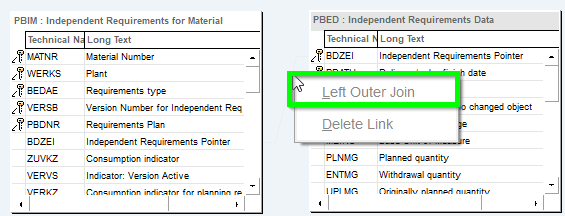
- In the change mode each field description can be changed

- Individual Extras (GER Zusätze) : For example mathematically calculation can be done


ABAB coding necessary; as example create new Field Group
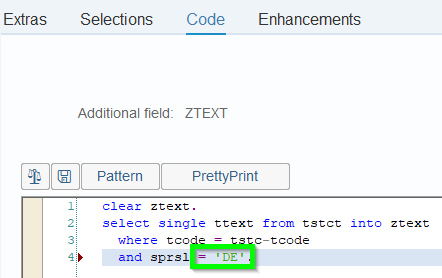
Create new field group


When Selections being used one or several values or even intervals can be used. Parameter means that only one value can be used. In our example only one language should be selected


Here is the result of the above InfoSet setting:


2) Deep Dive – Query SQ01
- Show Report Name :
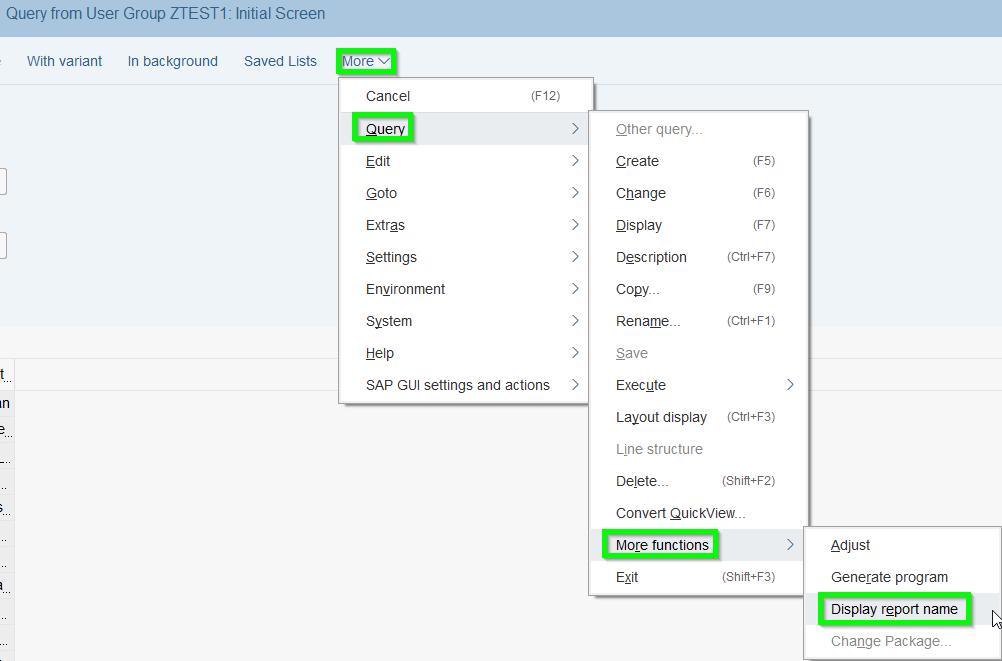

Then run SE16N Table REPOSRC or ABAP Editor SE38 :


- Create Local Field : For example to show Icons if a translation of a transaction exist. 1st step to switch on „Short names“:

Then enter green marked cells as follows:
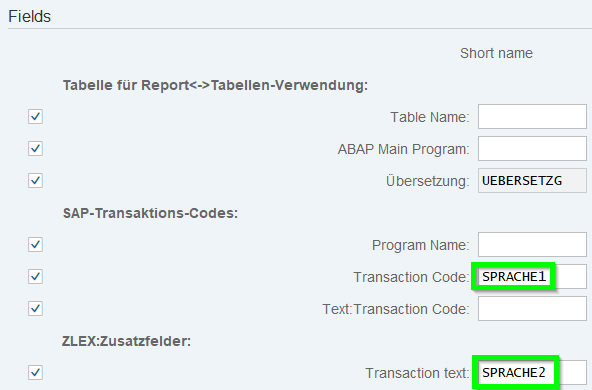
In addition a new local field:

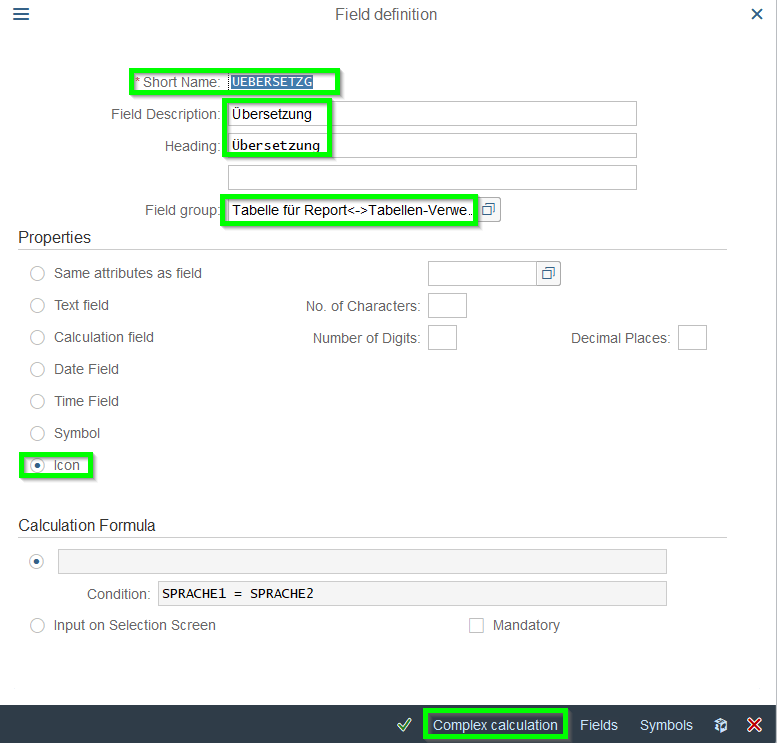
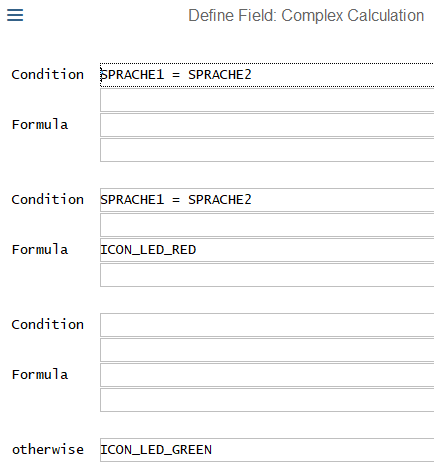
Last step „Local field“ activate as selection in Basic list:
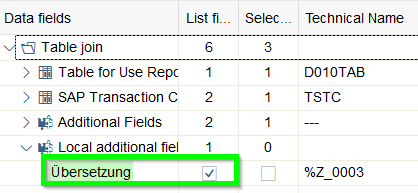
In the query you have now created an green icon if translation exist:

- Save with Id : You can save several results as list and retrieve the list later:
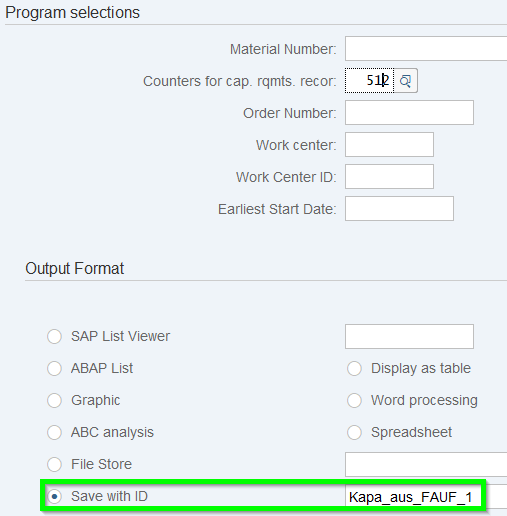
To retrieve the list follow button „Saved Lists“:

- Symbols and Icons : Via SAP transaction /nICON you can retrieve all SAP symbols and icons:
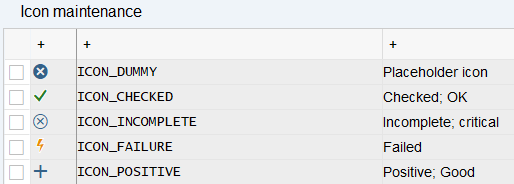
Create via „Local field“ see above or via SE38 Program SHOWSYMB
- Add Query Transaction: Via Customizing new Z-Transaction can be created and transported to P-System (PFCG)
